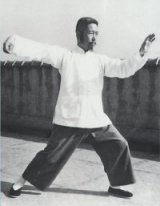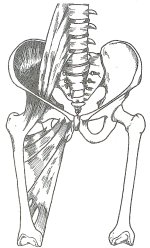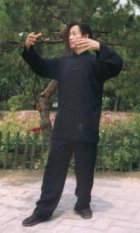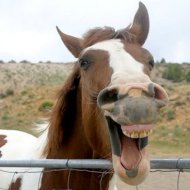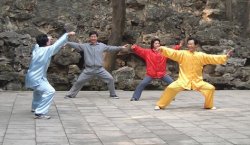Push hands is an accessible abstraction of fighting. Whereas mortal combat follows no pattern and honors no rules, the push hands exercise is relatively limited in scope. Push hands practice alone will not make a top fighter, nor is it intended to do so; it focuses on specific characteristics, such as sticking and following, in order to provide a consistent and effective learning environment.
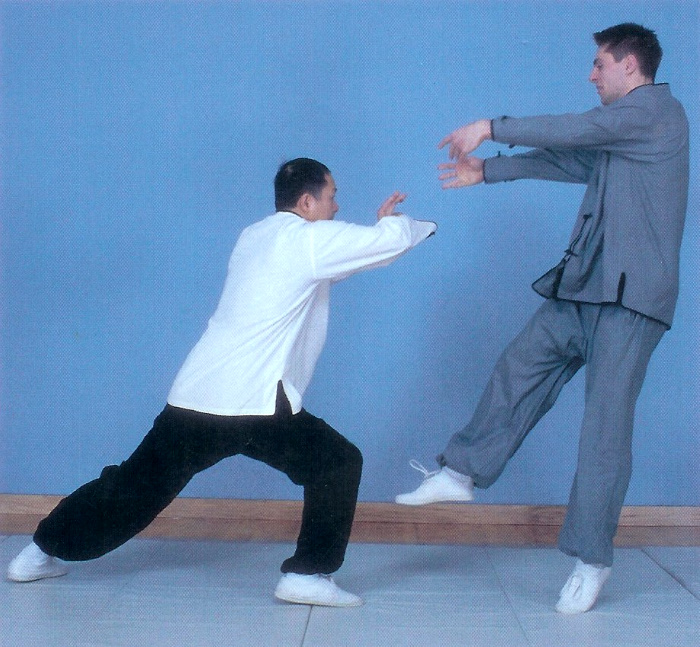
Yang Jwing-Ming demonstrates Press (Ji)
Abstractions such as the fixed step tui shou exercise are often misused, by students who do not fully understand their context within the larger Tai Chi curriculum. These students shape the exercise into something more or less than it is intended to be, diminishing its relevance and benefits, and shortchanging themselves and their training partners.
What should the pushing hands drill include, and what should it exclude?
